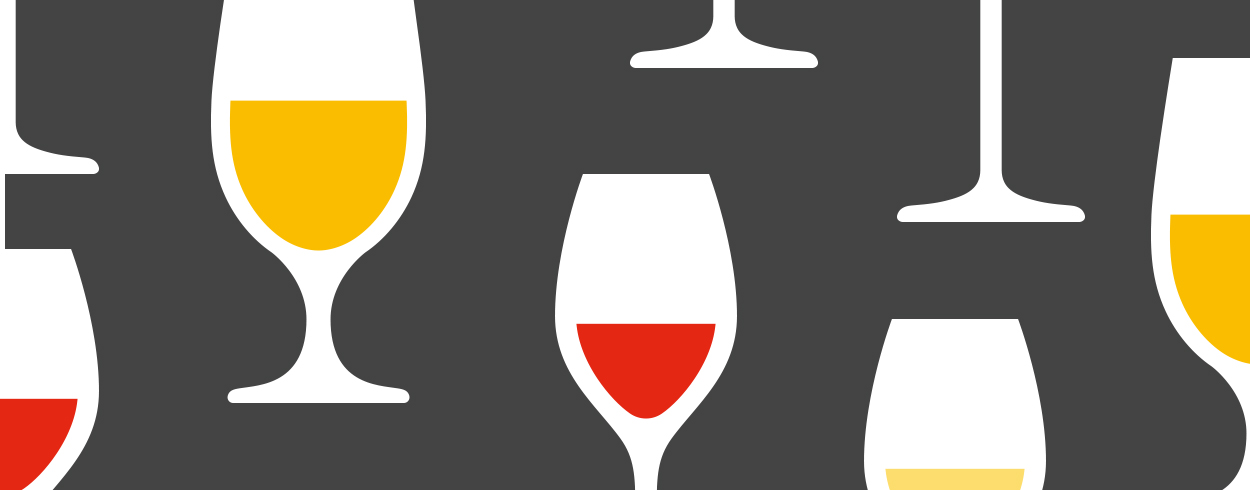
Calories in alcohol – the stronger and sweeter the beverage, the more energy it contains
Did you know that most of the energy in alcoholic beverages comes from the alcohol itself? Alcohol contains almost as many calories as fat: one gram of alcohol has 7 kcal of energy. The calories in alcoholic beverages consist of the alcohol and the sugar contained in the beverage. The stronger and sweeter the beverage, the more energy it contains.
Non-alcoholic beverages – such as non-alcoholic wines, beers, ciders and mocktails – are considerably lighter alternatives to their alcoholic equivalents. You can easily look up the energy content of the beverages in Alko’s selection from the product information in the online shop.
Comparison of the caloric content of different alcoholic beverages
The caloric content of beverages can vary greatly within the same product category, such as red wines and beers. These differences are due to variations in the alcohol and sugar content of these beverages. The table below shows the average energy content in different product categories. An easy rule of thumb: the stronger and sweeter the alcoholic beverage, the more calories it contains.
| Product category | Energy content (kcal/dl) |
| Red wine | 70–90 |
| Rosé wine | 60–80 |
| White wine | 60–90 |
| Sparkling wine & champagne | 60–90 |
| Dessert wine & other fortified wines | 70–180 |
| Beer | 40–110 |
| Cider | 30–60 |
| Mixed drinks, e.g. Long Drinks | 30–90 |
| Vodka and unflavoured spirits | 170–280 |
| Gin and other flavoured spirits | 160–280 |
| Rum | 200–270 |
| Cognacs | 220–230 |
| Brandy, armagnac & calvados | 200–240 |
| Whisky | 220–240 |
| Liquer and bitter | 160–380 |
Alcoholic beverages can contain a surprising amount of calories – they can multiply the amount of energy you consume during the day. Examples of different beverages and their calories are presented below.
- One glass (16 cl) of red wine = 128 kcal = one scoop of vanilla ice cream
- One bottle (0.75 l) of sparkling wine = 525 kcal = double cheeseburger
- Three cans (0.33 l) of medium-strength beer = 396 kcal = one and a half grilled sausages
- Two cans (0.5 l) of cider = 500 kcal = about 100 g of milk chocolate
- Two shots (4 cl) of vodka = 176 kcal = half a jelly doughnut
Calories in wine – non-alcoholic wines have less energy, but plenty of flavour
Non-alcoholic wines typically have a light and sweet taste, as sugar is used to balance their flavour. In spite of this, non-alcoholic wines contain a relatively low amount of energy compared to alcoholic wines.
Calories in red wine
Red wine with 12.5-14.5% alcohol by volume typically contains about 70-80 calories per decilitre. Non-alcoholic red wines contain only 10-20 calories per decilitre. The difference in the amount of calories in alcoholic and non-alcoholic wine may be even greater, as some red wines have an ABV of 17%, which increases the amount of energy to 100 calories per decilitre.
Calories in white wine
An ordinary dry or medium-sweet white wine with an alcohol content of 12.5-13.5% contains about 70-80 calories per decilitre. The same amount of non-alcoholic white wine has only about 10 calories, even though it has as much sugar as a medium-sweet wine.
Calories in sparkling wine
Sparkling wine and champagne, which generally have an alcohol content of 10-13.5%, typically have 70-80 calories per decilitre. Non-alcoholic sparkling wine generally has only half the calories, 20-40 per decilitre. Non-alcoholic sparkling wines contain more sugar than non-alcoholic white wines, which increases their caloric content.
Calories in cider and beer
A 4.5% cider has about 60 calories per decilitre, while a non-alcoholic cider has only around 10 kcal.
A pale lager with 5.2% alcohol contains around 40 calories per decilitre, while the same amount of non-alcoholic lager only contains 20 calories.
Alcohol and calories – tips for slimming down
Alcohol is one of the major reasons behind weight gain among Finns. To start cutting down on calories, you should pay attention to the number of alcohol portions consumed in one sitting and the frequency of alcohol consumption and switch from alcoholic to non-alcoholic beverages. Even small changes can help weight management and improve health. Read more about harmful effects of alcohol and illnesses caused by alcohol.
Alcohol can also have an indirect effect on weight gain. Alcohol increases appetite and may lead to irregular eating times. Those who drink exercise less (source: AddictionLink). All of these factors are important for weight management.
Thanks to high-quality low-alcohol and non-alcoholic beverages, you don’t need to compromise on tasty pairings of foods and beverages.
The caloric content of all beverages sold at Alko is marked on the product cards on our website. Browse the products.
 Chat
Chat